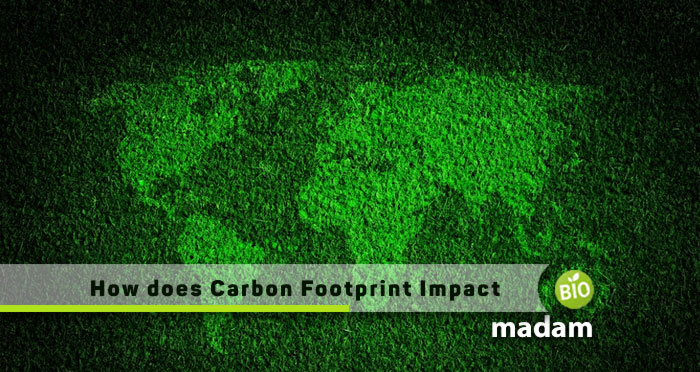It seems like the words “climate change” are always on the news. The summers are getting warmer, the weather is getting weirder, and we might be to blame. But how?
The answer lies in our carbon footprints. But what is a carbon footprint? What does your carbon footprint have to do with climate change, and how can you minimize your impact? We’re here to answer your questions.
Read on to learn more.
What is a Carbon Footprint?
Everyone has a carbon footprint (both individuals and larger entities, like corporations). A carbon footprint is the amount of greenhouse gases that someone produces with their day-to-day actions.
The average American produces about 16 tons of greenhouse gases. This may shock you! Remember that everything you do, from turning your lights on to driving to work, produces greenhouse gases. You can use apps to check your carbon footprint as well as apps to track your carbon offset to see how well you’re doing. You may be surprised at what you find!
The United States has one of the largest carbon footprints in the world.

How does your Carbon Footprint Impact Climate Change?
So what does that have to do with climate change?
Greenhouse gases aren’t good for the planet. They’re gases that trap heat in the atmosphere. They contain, among other things, carbon dioxide and Monoxide, methane, and nitrous oxide.
You may have noticed climate and weather patterns changing over the years, and there’s evidence to suggest that greenhouse gases are behind that change. An increase in greenhouse gases directly correlates to warmer temperatures and extreme weather events.
Of course, your carbon footprint is just one footprint among many. Your impact is technically minuscule, but it still matters. If everyone made an effort to shrink their carbon footprints together, we could reach a point in which we’re no longer negatively impacting the atmosphere and furthering climate change.
Some scientists believe that it’s already too late to undo the damage caused by greenhouse gases, but others think that if we can reach true carbon neutrality, we have a chance at healing the earth.
Carbon neutrality means that we emit and absorb carbon in equal amounts. In other words, the damage should be offset.
How can you Shrink your Carbon Footprint?
So you want to start doing your part to prevent climate change, right? While it’s true that you’re only one person, your changes will make an impact. If millions (or, ideally, billions) of people all work hard to shrink their carbon footprints, we may have a chance to reverse some of the damage we’ve caused.
In reality, a lot of the biggest problems for the environment come from corporations rather than individuals. That doesn’t mean that you can’t do your part to minimize your own damage. You can’t change what businesses do, but you can change your own behaviors.
Here are a few changes you can make to shrink your carbon footprint.
Conserve Power in your Home
How much energy do you waste in your home? You’re not just throwing money down the drain by using too much energy and running up your energy bills. You’re also increasing your carbon footprint.
Think of ways that you can start using up less energy. You’ll find that it’s easier than you think once you’re making conscious decisions about your actions.
Turn the lights off when you leave a room. During the day, keep the blinds open and take advantage of natural light rather than using artificial light. If it’s cold outside, letting the sun in will also keep your space warmer without using electricity.
If it’s hot, that’s the exception. Cover your window to block the sun to keep your space cooler without using air conditioning.
Consider putting timers on your lights, so they’ll turn off automatically. This way, you don’t have to worry about whether or not you actually remembered to turn your lights off.
Do your laundry with cold water rather than hot when it’s possible to do so.
Eat Less Meat
Factory farms are huge producers of greenhouse gases. If you can’t buy locally-raised meat, try to minimize your meat consumption. It’s better for the environment, and in some cases, it’s also better for your health. You don’t have to be vegan, but try adding some meatless days to your week.
On that note, you should try to eat more local foods in general. When you buy imported foods, you’re buying foods that had to be transported via truck or boat, and that transportation emitted greenhouse gases.
Buy Used Items
Another big problem for the environment is fast fashion. Fast fashion factories emit greenhouse gases and their products routinely end up in landfills before they’re ever worn.
You can’t always afford to buy sustainable products, but try shopping for used products instead. By extending the life of a used item, you’re reducing your negative impact on the planet and shrinking your carbon footprint. You may also save some money!
Drive Less Often
In many places, driving is a necessity. People have to commute to and from work and public transportation options aren’t always available or accessible. Unfortunately, driving is also terrible for the environment.
If possible, try to drive less often.
If you have public transportation options nearby, see if you can use them for some of your standard trips. If not, see if carpooling is an option.
If you’re in good health, and you don’t have far to go, walking or riding a bike is far better for your body and the environment. You may not be able to do it every day, but you can replace some of your car trips.
Vote with your Wallet
Try not to support companies that have giant carbon footprints. It’s unavoidable sometimes, but consider avoiding major corporations when you’re buying non-necessities. The only way that businesses will ever change is if their actions cost them money.

How Large is your Carbon Footprint?
Is it time for you to start shrinking your carbon footprint? You’re only one person, but even you can make a positive impact. You can’t stop climate change on your own, but you can do your part.
If you love keeping up with scientific news and research, don’t forget to check out the rest of the site.

Hi, they call me Jenna, and I am also known for achieving a gold medal during my Ph.D. in science life. I always had a dream to educate people through my utmost writing hobby. So, I chose this blogging path, and Biomadam gave me this opportunity to present for them. I now stand to entertain you. Continue reading my articles & discuss if you’ve any confusion through the comment section below.

